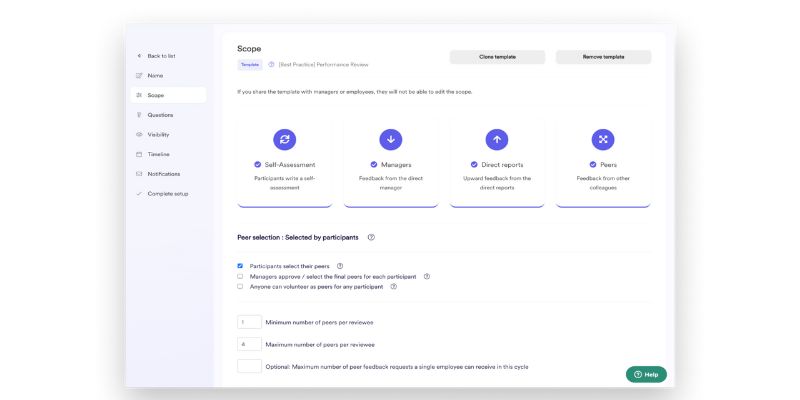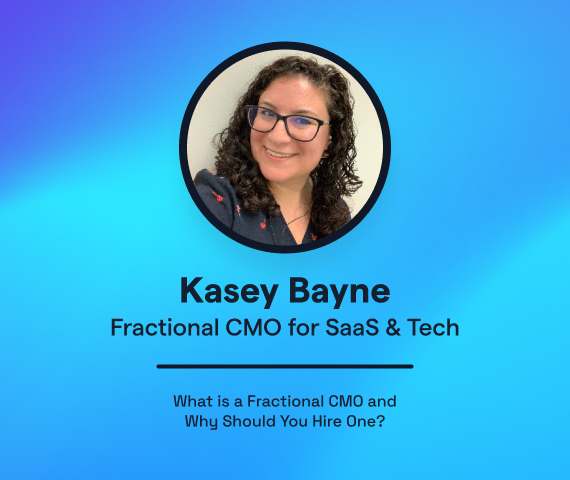Employee Growth is a Two-Way Street: How to Lead while Listening
I’ll cut straight to the chase: being a good leader is rooted in being a good listener.
I used to think that leading meant I needed to have all the answers and needed to be an expert at everything. When the truth is, it’s okay not to have all the answers. In fact, it’s impossible to have them all. Those you’re leading have a lot of the answers and a lot of the guidance you need as a founder lies within those that you’re trying to guide.
DSLX, my content agency, has been running for two years now. I’ve built a remote team of over 20 talented souls. Some are full-time, some part-time, and some are project-based, but all of them have taught me how to be a better leader by enlightening me on how and where I can help them grow.
In this article, I’ll share how you can support employee growth, both professionally and personally. I’ll share employee growth strategies I’ve put in place at DSLX and some nuggets of wisdom I have learned from listening along the way.
6 ways you can support employee growth (and your own!)
1. Carve roadmaps and milestones with your employees
Everyone’s growth pathway looks different. You cannot map out one growth plan and expect it to resonate with every employee. So, the best place to start preparing your employees for their growth path is by asking them.
Set up a one-to-one where you ask them the following questions:
- What are you hoping to learn in this role?
- Where do you hope this role will take you?
- What skills do you feel you are lacking to be truly successful in this role?
- Do you have any side hustles or passion projects that you would like to develop further alongside this role?
- Are there any nice-to-have skills you’re curious to expand on?
Once you’ve got these answers, set up some tangible milestones for you and the employee to meet that will showcase you’re progressing towards those hopes and wants.
I appreciate that it can be hard to measure something as subjective as a soft skill. So, set up time completion milestones: did <employee> put <no. of hours> into developing <said skill> within <time period>?
Find ways to reward those milestones too. This can be anything from small gifts to pay increases. Whatever suits your budget, and your work culture.
2. From retreats in corporate hotels to progress diaries: hold physical space for growth
Providing physical space for growth is such a huge way of saying you truly believe in an employee’s success. It’s all well and good saying it, but physicalising it affirms your words. So, find ways that you can create physical encouragement for your employees that work with your budgets.
This can be anything from booking corporate hotels for company offsites that solely revolve around employee growth, all the way through to something as small as sending a branded progress diary to your employees. There’s something about taking things offline that will always make them more real—at least for the current generations in the workplace!
3. Personal development time-off and budgets
I appreciate that this one is budget-dependent and will look different depending on what level of growth your business is at. I asked my team what they thought they needed to hit their goals and two things I heard back across the board were the gift of time and an investment budget.
So, we threaded these two benefits into the company perks:
- 2 hours per week for personal development
- €250 per year for personal development courses
In fact, our entire benefits package was led by our current workforce. Why offer things people are not going to use?
If you are giving the gift of time to your workforce, then it’s up to you to ensure they’re using it. It can be hard to take time away from a busy schedule and to focus on something seemingly non-work related when the team knows there’s so much work going on. I know we’ve been guilty of doing this a fair few times at DSLX. Remind your employees that you want them to use that time off to work on their growth paths, and that no matter how busy they get, they still need to be benefiting from this perk.
4. Implement buddy and mentorship schemes
One system I’ve found incredibly helpful is buddy systems, also known as mentorship schemes. These systems can work in multiple of directions, and don’t necessarily need to be a “senior” member of staff guiding a “junior”. At a diverse company, everyone has their own unique skill sets, and everyone can learn something new from someone else—despite age, education, or experience.
For these to be successful, you’ll need to build a list of the skills your team has—including your freelance workforce. Psst: just ask them what they’re good at!
From there, you can match these skills with those that other team members are hoping to learn.
These systems help to foster cross-team collaboration, better communication, and ensure that even your most junior team members feel heard, respected, and valued. It’s a huge confidence booster for many and helps everyone fry imposter syndrome. In fact, it’s what a lot of us are doing here at Growth Mentor—identify your strengths and share them!
A side note: Any employee or writer at DSLX has a free-forever subscription with me! (I’ve been in SaaS too long). Extend your offer for mentorship beyond when your working relationship pauses: why not?
5. Increase responsibilities and adapt to challenges
A big sign of growth is welcoming new responsibilities and handling new challenges at work. A manager once told me: “Ray, you wouldn’t be facing this challenge if you weren’t ready to face it.” And you know what? They were so right. Bigger, tougher challenges showcase growth and nod towards new responsibilities that you’re giving your team.
I asked my team how they thought they’ve been supported in their growth at DSLX and this is what Cristina, a DSLX account manager, said:
“In terms of professional growth you’ve allowed me to advance in my career by giving me new responsibilities when I was ready, but also by preparing me for these new roles.
You’ve been great at managing my setbacks or mistakes by making me improve instead of shaming me for them or taking the responsibilities away from me. Overall, you’ve provided an environment where I can work on my skills and grow at my own pace, letting me become an asset and feel like my work is valued.”
Feeling valued really hits home for me when it comes to this topic. It’s so crucial that your team members feel valued. I’m sure that they are. But, are you doing all that you can to showcase your appreciation? To sum up: increase responsibilities, share new challenges, and celebrate when the pair are conquered.
6. Gather feedback: formalize the process with feedback software
Last, but not least, gather feedback! The strategies I’ve shared have worked for me, at my business. That’s not to say they’ll work for you too! It’s so crucial that you set the time and processes in place to listen and gather feedback from your workforce on what’s working and what isn’t.
Now, this process can be a little tricky to manage. Especially if you’re dealing with a larger or fully-distributed team. There is some fantastic 360-degree feedback software out there, you’ll just need to find the one that’s the right fit for your team’s culture, size, and your budget!
I know from experience that it can be tough for someone to share how they feel (truly) knowing their name is alongside it. One of the best ways to get around this is by incorporating software that enables people to share their feedback completely anonymously. ‘Anonymously’ doesn’t mean HR is removing names, it means machines that won’t be sharing that information are removing names—one of the few times you’ll ever hear me say: leave it to the bots!
Water your employees and watch them bloom!
There you have it, six strategies we use at DSLX to encourage employee growth. And, we’re working on a ton more as I type this article! Remember, you’re continuously growing and learning too. There’s no end to it. Let lessons in for as much as you pass them out. Quieten the ego. Growth is a journey, and it’s up to you how open you choose to be to that journey.
I hope you’ve found this article insightful and have, perhaps, found a strategy or two that you can implement in your own workplace to encourage employee growth. I’d love to hear from you on how you’re building and blossoming your own team. You can find me on Linkedin, or book a call with me via Growth Mentor.
What’s left on the agenda? Sit back and listen up, you’ll be surprised at what you can learn from those around you.
Good luck, and happy growing!







